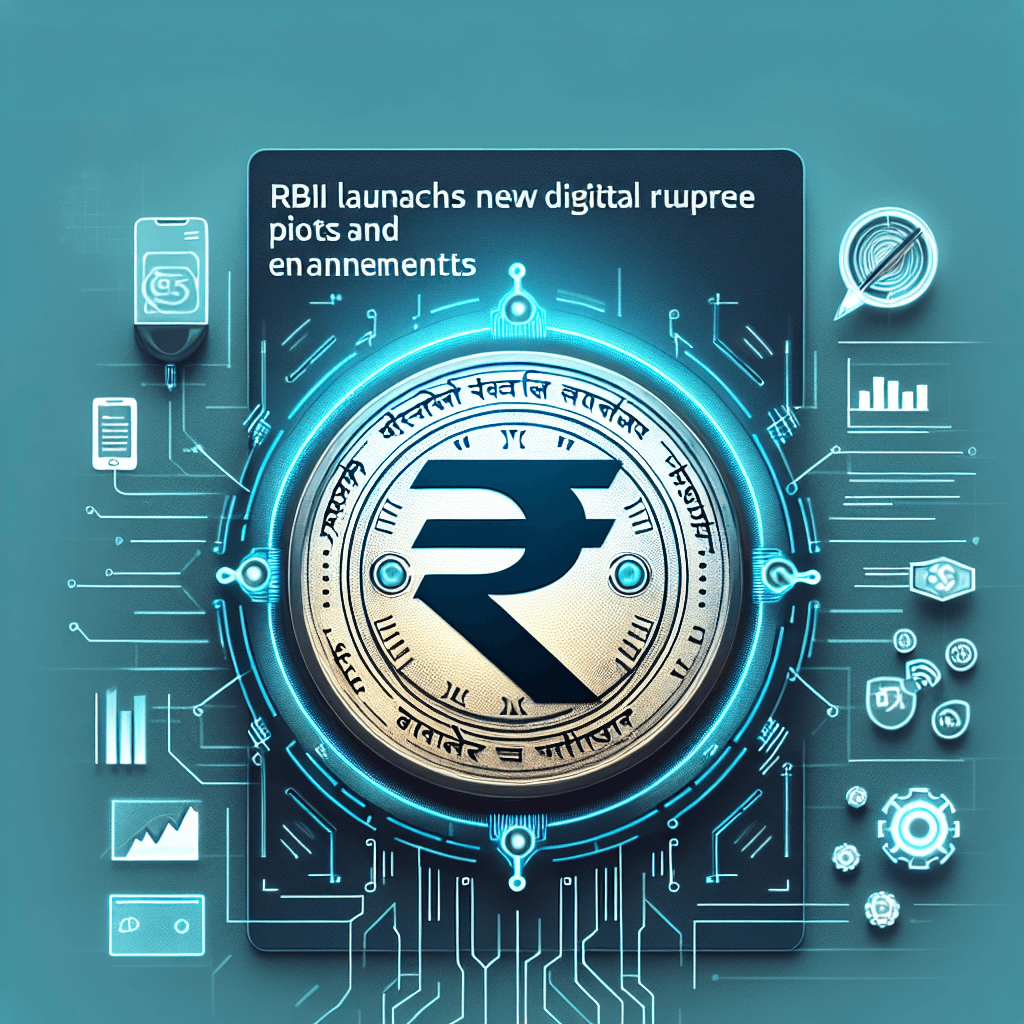RBI Launches New Digital Rupee Pilots and Enhancements

The Reserve Bank of India (RBI) is accelerating its central bank digital currency (CBDC) initiative by broadening pilot programs for both the retail and wholesale digital rupee. According to the RBI Annual Report 2024–25, the bank plans to introduce advanced features such as programmability, offline transaction support and cross-border settlement capabilities. These enhancements aim to increase utility in underbanked regions, improve transaction efficiency and lay the groundwork for international interoperability.
Expansion of Retail and Wholesale CBDC Pilots
The report highlights that the retail CBDC pilot now covers 600,000 users across 17 banks, with participation from select merchants, fintechs and non-bank wallet providers. On the wholesale front, the pilot has been extended to include repo operations and tokenized government securities trading among four standalone primary dealers (SPDs) and major commercial banks.
- Retail CBDC: Six hundred thousand end-users transacting via CBDC wallets, prospectively scaling to 1 million by Q4 2025.
- Wholesale CBDC: Settlement of interbank repos, delivery-versus-payment (DvP) for tokenized G-Secs and multi-currency corridor experiments.
- Non-bank participation: Selected payment service operators now able to issue CBDC wallets under RBI supervision.
Technical Architecture of the Digital Rupee
The digital rupee is built on a hybrid architecture combining a centralized ledger maintained by the RBI with distributed validation nodes run by approved intermediaries. Key technical specifications include:
- Consensus Mechanism: A permissioned proof-of-authority (PoA) network, ensuring finality within seconds and near-zero energy consumption.
- Programmability: Smart contract modules allow conditional transfers, escrow services and automated subsidy disbursement based on predefined rules.
- Offline Capability: Secure Element (SE) chips enable peer-to-peer transactions without network connectivity, synchronizing upon reconnection.
- Cryptography: Use of elliptic-curve digital signatures (ECDSA) and AES-256 encryption to protect transaction integrity and user privacy.
Dr. Aditi Rao, CBDC researcher at IIM Bangalore: “The combination of offline functionality and programmability could be a game-changer for rural subsidy delivery and corporate treasury management.”
Comparative Landscape of Global CBDC Initiatives
India’s digital rupee initiative is part of a broader global wave. For context:
- China (e-CNY): Nationwide trials with 300 million users, focus on retail payments and merchant acceptance via QR codes.
- Bahamas (Sand Dollar): Full issuance with offline wallet support, aimed at Financial Inclusion in remote islands.
- European Union (Digital Euro): In design phase, emphasizing privacy-preserving features and cross-border compatibility under the Eurosystem.
India’s approach places it among the leaders in real-time payment adoption: the Unified Payments Interface (UPI) accounted for 48.5% of global real-time payments by volume in FY 2024–25, per the RBI report.
Implications for Financial Inclusion and Cross-border Payments
Beyond technological innovation, the expanded CBDC features have strategic implications:
- Financial Inclusion: Offline CBDC can reach unbanked populations in remote areas lacking reliable internet or electricity.
- Subsidy Delivery: Programmable tokens allow direct, conditional transfers—optimizing welfare distribution and reducing leakage.
- Cross-Border Remittances: Pilot corridors with Bhutan and the UAE aim to settle remittances in digital rupee and partner CBDCs, cutting costs and settlement times.
India’s Supreme Court Calls for Crypto Regulation
On May 20, 2025, India’s Supreme Court urged the government to clarify its stance on cryptocurrencies, warning of a growing “parallel economy.” Although a 30% tax on crypto profits has been in place since April 2022, the bench pressed for a comprehensive regulatory framework to address anti-money laundering (AML) and consumer protection concerns.
Looking Ahead: Roadmap and Challenges
The RBI plans phased rollouts through late 2025, contingent on pilot outcomes and legislative support. Key challenges remain:
- Interoperability: Ensuring seamless integration with existing UPI rails and international CBDCs.
- Privacy vs. Oversight: Balancing user anonymity with AML/KYC obligations.
- Scalability: Guaranteeing network performance during peak transaction periods.
As the digital rupee evolves, collaboration between regulators, financial institutions and technology providers will be critical for secure, efficient and inclusive rollouts.